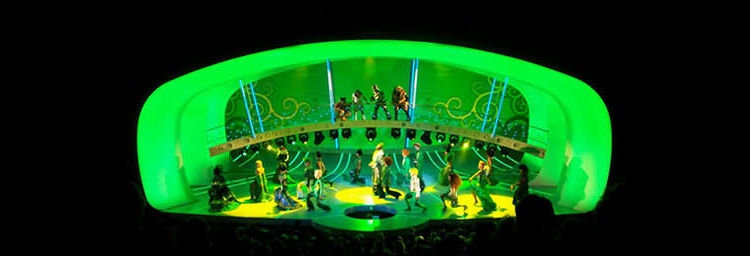Whether it's used to create the verdant fields and forests of Oz or the Emerald City itself, the color green can be used to evoke emotion and create a time & place on stage. We’ll showcase this hue by focusing on three shows set in the land of Oz – The Wizard of Oz, The Wiz and Wicked.
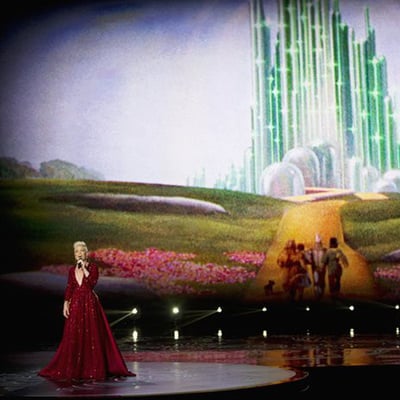
Pink singing "Over the Rainbow" at the 86th annual Academy Awards
®
The color green is effectively used two ways in the original Wizard of Oz – the Emerald City and, of course, the skin tone of the Wicked Witch. Who can forget Margaret Hamilton in the iconic 1939 film as the Wicked Witch of the West and her frightening green face?
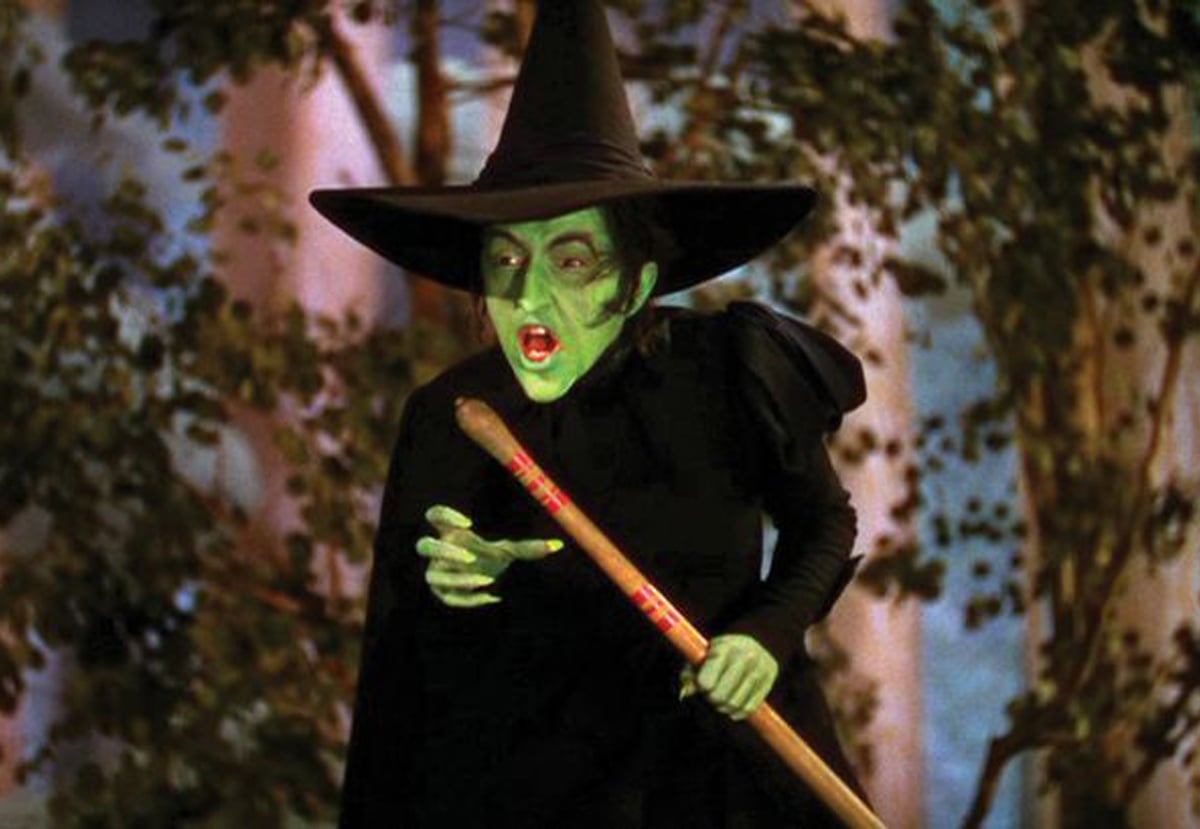
Margaret Hamilton as the Wicked Witch of the West
According to “Playbill,” The Wizard of Oz is continually on the top-ten list of musicals produced by high schools. So, chances are, someone you know is probably about to mount a production and paint some sort of set or drop for the Emerald City.
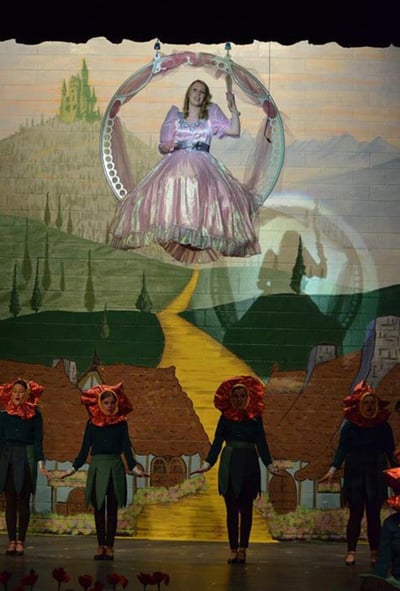
ThunderRidge High School’s 2013 production of “The Wizard of Oz”
We don’t call it Emerald Green for nothin’! Both Off Broadway #5364 and Supersaturated #5972 Emerald Green are great, vibrant choices for creating the Emerald City. If you want to make the green even more eye-popping, or if you’re looking for an electrifying highlight/accent color, try VividFX #6261 Electric Green – either on its own, or mixed with the Emerald Green, to give your Emerald City a visual boost.
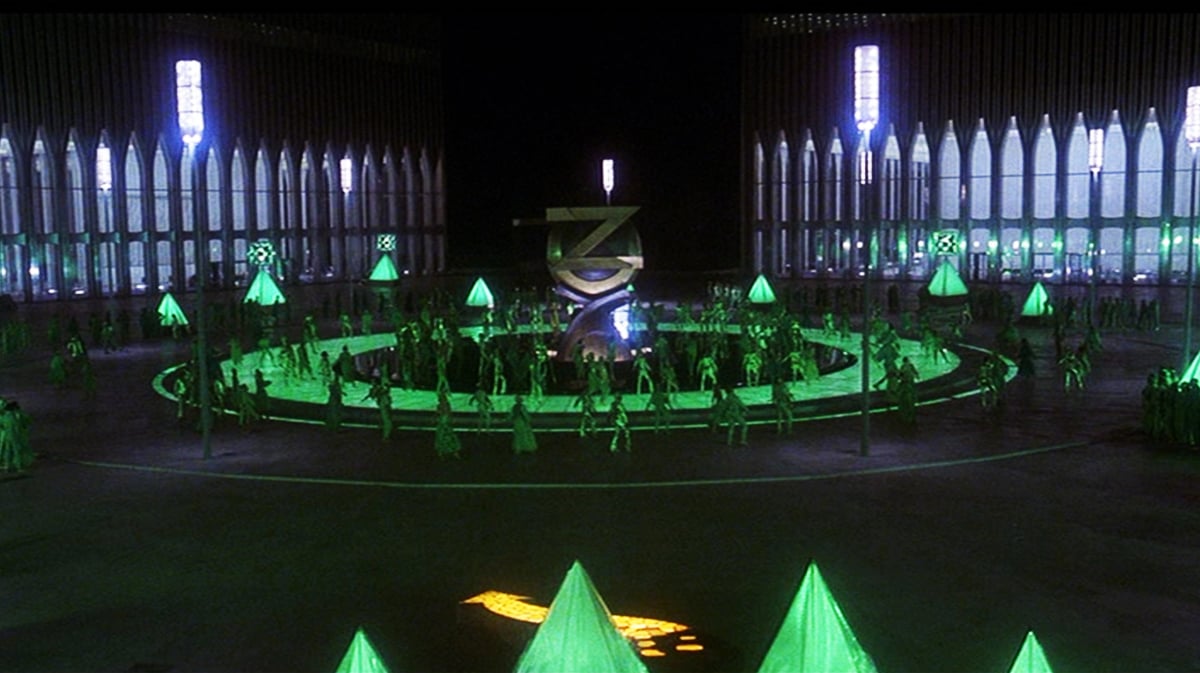
The Emerald City of Oz from “The Wiz” looking a lot like New York City.
The Wizard of Oz was adapted into The Wiz in 1978. For the number “Green, Red, Gold” as the foursome entered the Emerald City, the set contained pyramids and platforms constructed with milk-plexi lit from below with thousands of standard A-lamps dipped in Rosco Colorine Cardinal Red, Canary Yellow and, of course, Emerald Green. This allowed the filmmakers to change the color of the set from green – to red – to gold by dimming up the proper bulbs. Color-changing scenery in the 70’s!
[arve url="http://www.veoh.com/swf/webplayer/WebPlayer.swf?version=AFrontend.5.7.0.1509&permalinkId=e116807jM7mcmY9&player=videodetailsembedded&videoAutoPlay=0&id=anonymous" /]
Rosco Colorine is now discontinued and, more than likely, the color-changing effect in “Green, Red, Gold” would be created using color-changing LED fixtures, like Rosco’s Miro Cube 4C, mounted underneath the milk-plexi. LEDs are a great tool, but, as Thomas Hase reminds us, it’s important to choose the right tool for the look you’re trying to achieve.
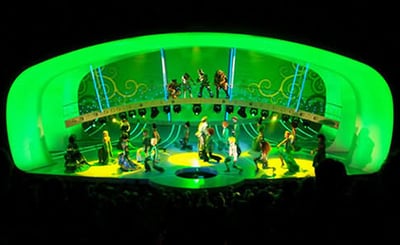
LEDs, Movers and Gels - Oh My!
Thomas Hase, worked with production designer David Gallo to evolve a unique, modern look for their staged production of The Wiz in 2006. Hase recalls, "we wanted our production to capture the visual perspective of the computer and iPod generation. The junkyard where the Tin Man is discovered had a broken Starbucks sign in it, for example. It was all bright, modern, primary colors, with about one hundred Vari-Lites and Martin MACs, several media servers, an LED floor and portals, as well as a bucketload of stationary fixtures with scrollers." Hase noted that Rosco diffusions were a great solution for spreading the hyper-directional LED fixtures. “An important component was the use of R113 (Matte Silk), a superb diffuser, on the walls of LEDs on each portal. The diffusion blended out the LEDs. The portals put out a strong glow that lit the rest of the floor.”
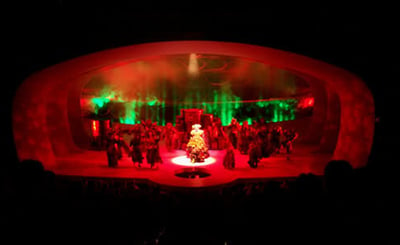
A parade of complementary red & green - only achievable with gel.
"The foreground here is a parade in R325 (Henna Sky) and R27 (Medium Red)” Hase describes. “Upstage are a number of green shafts created by using banks of 600W ACLs pointed straight up. The green in the ACL’s (a mixture of Rosco E-Colour+ 139 Primary Green and R88 Light Green) against that burnt red is a very strong image. We used it often, and it's a red and a green I could not get if I had tried to mix from LED units or even moving lights. LEDs are a tool, as are the color mixing flags in a moving light, but I don't think we should forget about the other tools for color and color mixing. In this case it absolutely had to be fixed colors." To read more about Thomas Hase’s production of The Wiz, click here.
And then of course, there is Wicked – an absolute festival of green that celebrated its 10th Anniversary last year. The lighting for both the Broadway and touring productions of Wicked was designed by the incomparable Kenneth Posner, whose work on Wicked was nominated for a Tony in 2004.
Posner specified several Rosco greens to help create the world of Wicked, including: R89 Moss Green, R90 Dark Yellow Green, R94 Kelly Green and R96 Lime. Here is a video of Kenneth Posner talking about his Wicked lighting plot:
We would love to see any pictures you’ve got of your Oz-themed productions. It’s easy to share them with us:
Just click here…
Just click here…
Just click here…

